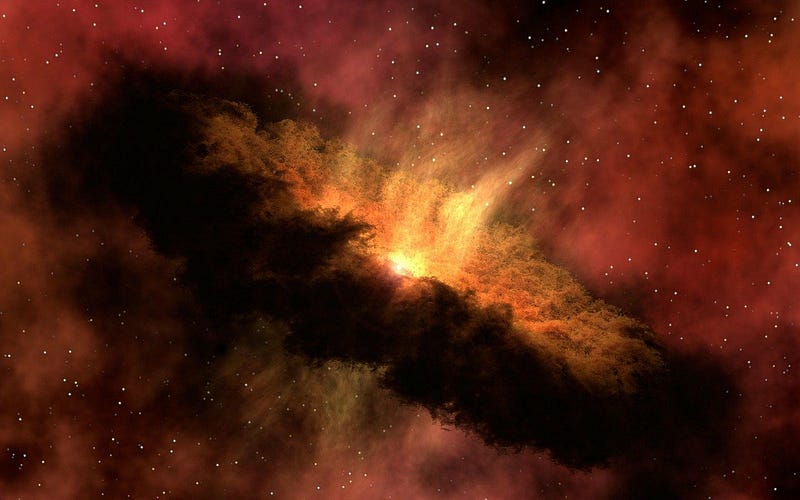Could Dark Matter Predate the Big Bang?
Olivia Hilferty, Undeclared, 2023

In the first prominent cosmological model, Aristotle placed Earth at the center of the Universe. A little less than 2,000 years later, Galileo’s idea of the Sun being at the center of our Galaxy became the accepted model. Throughout time, scientists have played a guessing game: the structure of an atom, the makeup of the brain, and the model of the universe. Many proposed scientific theories have been accepted for decades only to be replaced. Others, in time, have been proven correct. Still, countless hold their place as the most accepted model for the singular reason that they make the most sense; there is no proof one way or another. That is the case with dark matter, a proposed invisible substance said to make up over 80% of the matter in the universe.
One of the first direct mentions of dark matter occurred in 1877 when Angelo Secchi wrote that “among these studies there is the interesting probable discovery of dark masses scattered in space.” To this day, it exists as a filler theory—a way to explain why galaxies form like they do and why the universe is expanding like it is.
Over 13 billion years ago, the universe existed as a singularity which expanded rapidly outwards, the phenomena known as the Big Bang. The dark matter that’s been said to have been produced in this explosion is often used to explain the speed at which the universe is expanding, but a new study has shown that it may not be a product of the Big Bang after all. Tommi Tenkanen, an astronomer and physicist at Johns Hopkins, has authored a study titled Dark Matter from Scalar Field Fluctuations that potentially proves that the origins of dark matter predate the Big Bang.
As one of the most frustrating mysteries in science, the existence of dark matter has been studied for centuries. Tenkanen says, “If dark matter were truly a remnant of the Big Bang, then in many cases researchers should have seen a direct signal of dark matter in different particle physics experiments already.”
While the Big Bang is commonly thought of as the beginning of the Universe, a theory called cosmological inflation holds that the it was merely a transition between two time periods. According to the theory, the Universe expanded at a certain rate until 13.7 billion years ago, when the Big Bang occurred. Afterwards, the rate of expansion increased drastically which led to the Universe we know today. According to Tenanken, dark matter existed during this cosmic inflation.
“We do not know what dark matter is, but if it has anything to do with any scalar particles, it may be older than the Big Bang,” says Tenkanen.
Tenkanen suggests that dark matter is a type of scalar, a particle with a spin integer of zero. His proposed scenario is the simplest possibility, something that researchers may have overlooked. “We do not know what dark matter is, but if it has anything to do with any scalar particles, it may be older than the Big Bang,” says Tenkanen. “With the proposed mathematical scenario, we don’t have to assume new types of interactions between visible and dark matter beyond gravity, which we already know is there.”
Launching in 2022, a new mission with the Euclid satellite aims to understand the nature of the dark universe. While the particle experiments in this mission may not directly answer the mystery behind dark matter, it will certainly give some answers to the origin. “While this type of dark matter is too elusive to be found in particle experiments, it can reveal its presence in astronomical observations,” says Tenkanen.
Someday, the world may look back on the mystery of dark matter as we currently do on Aristotle’s heliocentric model of the universe. The complex structure of the universe may be explained in a single sentence. Until then, the current theory will remain the most widely accepted one, and Tenkanen’s mathematical scenario will stand to back it up.
A History of Dark Matter (2016). DOI: 10.1103/RevModPhys.90.045002
Dark Matter from Scalar Field Fluctuations (2019). DOI: 10.1103/PhysRevLett.123.061302
